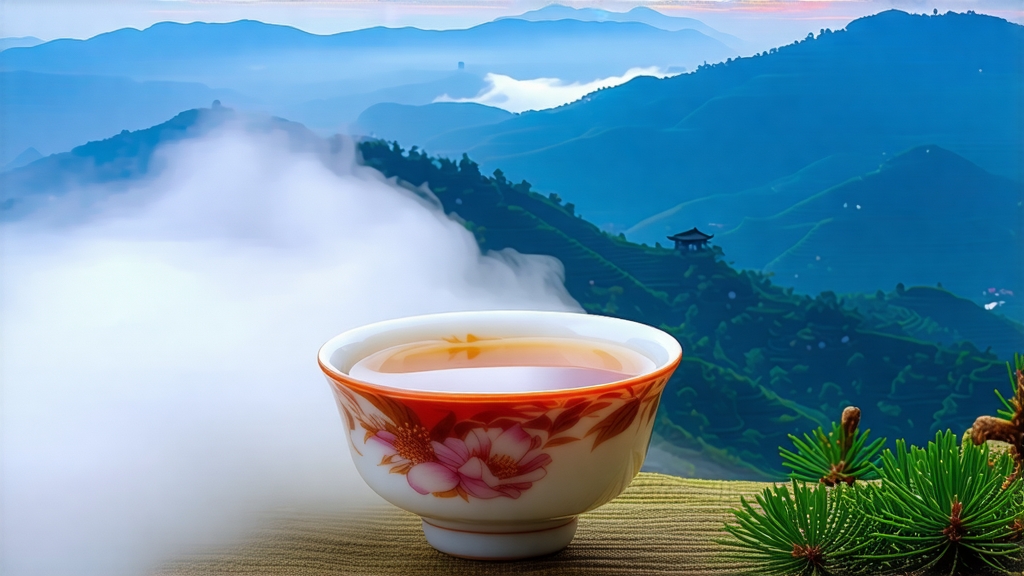
High in the mist-wrapped Wuyi Mountains of northern Fujian, where nine-bend streams snake between cliffs of purple sandstone and air is thick with the scent of pine and camellia, tea makers still tell the tale of the world’s first black tea. Locals call it Zheng Shan Xiao Zhong; the West knows it as Lapsang Souchong. Whatever the name, every coppery leaf carries the perfume of a 400-year-old accident that changed global taste forever.
Legend places the birth during the late Ming dynasty, around 1604. Qing soldiers, so the story goes, camped in the Wuyi village of Tongmu, commandeering the only bamboo-withering shed and forcing farmers to delay the processing of freshly picked leaves. To rescue the crop before it spoiled, quick-thinking tea masters spread the leaves over masson-pine fires, drying them rapidly while imbuing them with an unfamiliar smoky sweetness. The result—dark, lustrous, long-keeping—traveled down the Min River to the port of Xiamen, where Dutch traders snapped it up as “bohea” and shipped it to Amsterdam and London. Europe had met black tea.
Tongmu village, perched at 1,200 m inside a national nature reserve, remains the legally protected birthplace. Here the original cultivar, Xiao Ye Zhong (“small-leaf bush”), grows slowly in mineral-rich, well-drained lateritic soil. Cool nights and thick fog slow photosynthesis, concentrating amino acids and volatile aromatics. Because the reserve bans outside plant material, every seedling is descended from the same gene pool that fed the Ming workshops, making Tongmu Lapsang one of the few teas still produced from landrace rather than clonal bushes.
Two styles now share the name. Traditional Lapsang Souchong is withered over pine embers, rolled, oxidized, then hot-smoked in wooden chambers whose floors are slatted above glowing pinewood. The smoke must be cool (below 40 °C) to avoid scorching, so fires are fed intermittently for up to eight hours while workers turn the leaves by hand. The finished tea carries a clean, resinous fragrance reminiscent of cedar campfire and dried longan. In contrast, “unsmoked” or “modern” Lapsang bypasses the final smoking; instead, withering is done with warm air, yielding a sweeter, maltier cup closer to a Fujian golden-tip black. Both styles are still called Zheng Shan Xiao Zhong—“small sort from the original mountain”—but only the smoked version may legally claim the Tongmu designation.
Harvest follows the lunar calendar. The first flush, picked around Qingming (early April), yields the most nuanced leaf: one bud and the first two leaves, still downy and pale jade. After plucking, the shoots are laid on bamboo trays set over dying pine fires so that smoke, not flame, drifts across the leaf. With moisture reduced by roughly 60 %, the leaves become supple enough to roll; twisting ruptures cell walls, launching enzymatic oxidation that turns chlorophyll into theaflavins and thearubigins. Once the leaf emits a sweet apple-like aroma and coppery color dominates, oxidation is halted by a brief high-temperature bake. Finally, the tea is sorted by hand into six grades—特级 (special), 一级 (first), down to 四级 (fourth)—based on leaf integrity, tip content, and aroma purity.
Water is the silent partner. Wuyi spring water, naturally soft at 30 ppm TDS, is hauled down the mountain for cupping sessions, but any neutral, low-mineral water works. For gongfu service, 5 g of long, wiry leaf is placed in a 120 ml porcelain gaiwan. The first rinse (95 °C, flash infusion) awakens the leaf and washes away surface smoke; it is discarded. Subsequent steeps—95 °C, 5 s, 10 s, 15 s—reveal a liquor the color of late-sunset clouds. The aroma opens with pine resin and moves through honey, baked plum, and a whisper of saffron. On the palate, a crisp, almost citrus acidity balances the smoky base, while the finish lingers like the memory of a distant forest fire sweetened by brown sugar. Western-style